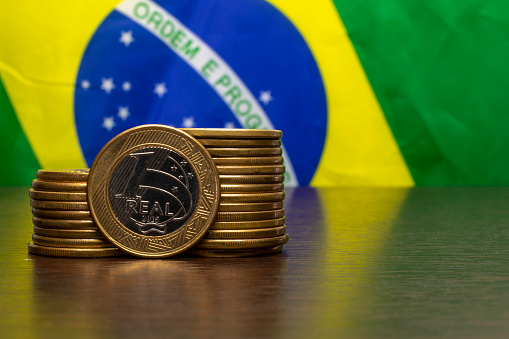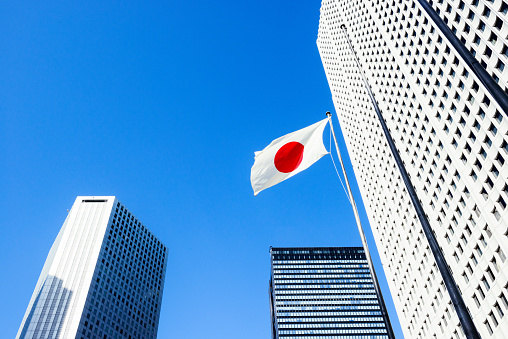The Brazilian Economy
In the early 2000s, the Brazilian government sought to resume more active industrial and technological policies. This was a turnaround from the liberal policies of the 1990s, when the country placed a greater emphasis on financial and trade openings. The government also began to turn back to industrial policies, which had largely been abandoned by the previous administration.
Impact of pandemic on brazil’s economy
Despite the pronounced impact of the COVID-19 pandemic, Brazil’s economy has recovered in recent quarters, albeit slowly. In the third quarter, the Brazilian economy expanded by 7.7% quarter-on-quarter, compared to a 2.9% decrease in the same period last year. However, the fourth-quarter data is likely to be impacted by the sharp rebound in cases of Covid-19. Additionally, the economy’s recovery will be hampered by uncertainty around the roll-out of vaccines. This uncertainty will likely hamper production and investment.
The COVID-19 pandemic is a serious challenge for Brazil’s economy and political system. The country has adopted measures to slow the virus’s spread, aiming to prevent the system from overburdening itself. Although Brazil has one of the strongest health care systems in Latin America, capacity is uneven across the country. Consequently, the poorest areas of the country are particularly vulnerable to the disease.
Despite the economic crisis, the Brazilian government has taken significant steps to combat it. It has extended the Bolsa Familia programme, a large conditional cash transfer program, to 1.2 million families. It has also introduced a program called Auxilio Emergencial (Emergency Aid), which pays half of the minimum wage for three months. In addition, significant financial support is being provided to small and medium-sized enterprises (SMEs) through the BNDES. Furthermore, state governments have already received emergency funding for the program, while federal transfers have frozen at last-year’s levels.
Despite these challenges, the country’s economy is likely to recover. Increasing global commodity prices are good for Brazil. Oil, soybean, and iron ore account for approximately 40% of the country’s merchandise exports. Meanwhile, Russia’s conflict with Ukraine is bad news for the country’s economy. The crisis is also bad news for Brazil’s energy sector.
Since the pandemic began, the economy has fared better in the tourism sector than in the services sector. However, the rapid spread of the disease has delayed travel plans and postponed the carnival celebrations in Rio de Janeiro. Despite this, revenues in the accommodation and food services sector have shown an incremental increase over last year.
Impact of export-oriented macroeconomic policies
The effects of deepening economic relations with China may have a negative impact on Brazil’s manufacturing sector. These new trade flows, which are often asymmetric, can be counterproductive for Brazil, as they may push its economy into a deindustrialization trap. As such, Brazil should be vigilant about how it manages the consequences of this new economic relationship with China. Brazil should work to foster a more sophisticated manufacturing sector.
While Brazilian trade has been very favorable for the country in recent years, think tanks and scholars have expressed concerns about the impact of trade policies on the economy. These include excessive concentration of exports in a few products, the environmental impact of exports, and the impact of strong Chinese manufacturing competition.
Brazilian economic policy has become more liberal in recent years, beginning with the Bolsonaro government’s liberalization policy. This government has reduced import tariffs on IT equipment, capital goods, and telecommunication goods. It also uses foreign exchange interventions to control the exchange rate. It also imposes capital controls to limit capital inflows.
The government’s export-oriented policies have had a positive impact on Brazil’s agricultural sector. Brazil’s agricultural output is increasing, and its agricultural exports are competing with those of the United States. These policies have also helped Brazil recover from a recession in 2014-16.
Brazil has a long history of political and economic volatility. Throughout its history, it has experienced many big booms and periods of economic decline. The country became the leading producer of sugar in the world in the 16th century, but its sugar industry suffered greatly from the rise of Caribbean sugar producers. At the turn of the 18th century, the country had a gold rush, but this was only temporary.
Brazil’s natural resources and population make it the largest economy in South America. However, this does not automatically translate to high incomes for citizens. Brazil must focus on developing its resources and improving its international competitiveness in order to improve its productivity and living standards.
Productivity improvements in brazil’s industrial sector
A key issue in Brazil’s productivity debate is whether the country should consider reforming its industrial structure to improve the overall productivity of its workers. The country has a low average productivity because it is poorly distributed across sectors, and because certain sectors employ a relatively large proportion of its factors of production. In addition, some sectors employ very few workers, meaning that their productivity is not reflected in the overall productivity measure.
In contrast, productivity improvements in Brazil’s industrial sector have been modest, with the exception of information services, where labor productivity has dropped in recent years. This has been attributed to changes in the Brazilian banking system, which have reduced labor productivity in these sectors. However, wages and productivity improvements in Brazil’s industrial sector have increased recently, largely due to persistently high returns to education, increased demand for qualified workers, and strong labor organization.
The underlying cause of Brazil’s low aggregate productivity is inefficient production processes. This is partly why Brazilian firms are unable to initiate sustainable productivity growth driven by innovation. There are different policy recommendations for Brazil to address the problem. Generally, however, policy recommendations for improving Brazil’s industrial sector focus on policies that increase its competitiveness.
The study adopts a sectoral approach to examine the productivity growth of Brazil’s industrial sector. The study also looks at the role of wages in this process. The study finds that real wages increased significantly while productivity growth was relatively modest. While this is the general trend, there are also significant sectoral variations. For example, in agriculture and commerce, wages increased dramatically despite low productivity growth. Those gains were accompanied by improvements in the quality of employment.
Brazil’s industrial sector has experienced intense industrialization in the postwar period, with periods of annual growth rates over 10%. The rapid growth in the industrial sector was not unintentional – it was actually driven by the country’s isolationist policies in the 1950s, which were aimed at protecting domestic industries from foreign competition. However, these policies turned out to be a curse in the early 1980s, as the country experienced unremarkable economic growth and high inflation rates.
The report also highlights the importance of improving business conditions and developing a robust innovation ecosystem. It presents a consensus roadmap to unlock the full potential of Brazil’s industrial sector. The report also recommends implementing trade facilitation policies to help the country become more competitive. In particular, it recommends that the country should develop its service sectors to facilitate exports of manufactured goods.
Import dependence of brazil’s economy on agriculture
Agriculture is one of Brazil’s most important sectors, accounting for more than 4% of the country’s GDP. Brazil’s vast land and abundant natural resources make it an excellent location for agriculture. In fact, Brazil’s agriculture and food sector is estimated to be worth $1.8 trillion by 2021. As of 2016, Brazil was the world’s top exporter of beef, orange juice, and soybeans.
But the interdependence of Brazil’s economy on agriculture has also created risks. As part of the Southern Common Market, or Mercosur, Brazil has signed several agreements with neighboring countries that restrict its agricultural imports. In addition, Brazil has limited trade agreements with Israel, Egypt, and SACU.
Brazil’s agricultural sector has expanded at a remarkable pace over the past two decades, growing by 8 percent annually. It has also tripled its livestock production. These developments have accelerated Brazil’s evolution from a tropical exporter to a major global supplier of agricultural products. Soybeans, in particular, have been a key crop in the expansion of the country’s farm sector, and are a significant contributor to the country’s economic growth.
As a result of lower resource costs, Brazil is able to expand its acreage and increase production. Its agrarian sector also focuses on a variety of products, including fruits, vegetables, meat, and dairy. The resulting surplus production has surpassed domestic demand, and the surplus is increasingly used for export. By 2021, Brazil will export $125 billion worth of agricultural products, with soybeans and soybean meal leading the way. The country is also a leading exporter of corn, cotton, and pork.
China has invested in Brazil’s economy in oil, gas, and mining, and has also announced planned investments in agribusiness. These investments are clearly resource-seeking and reflect the trade relations between the two countries. However, despite these investments, Brazilian exports remain largely centered on primary commodities, such as soybeans, palm oil, and cotton. In addition to these, Chinese companies have invested in air conditioners, motorcycles, and construction machinery.
While Brazil is increasingly exporting manufactured goods to other markets, China remains its largest trading partner. It accounts for over 15% of Brazilian exports, and about 14% of its imports. In the last decade, Brazil has become a major supplier of soy beans and iron ore to China, and the country’s exports to China have increased by more than thirty-fold.



